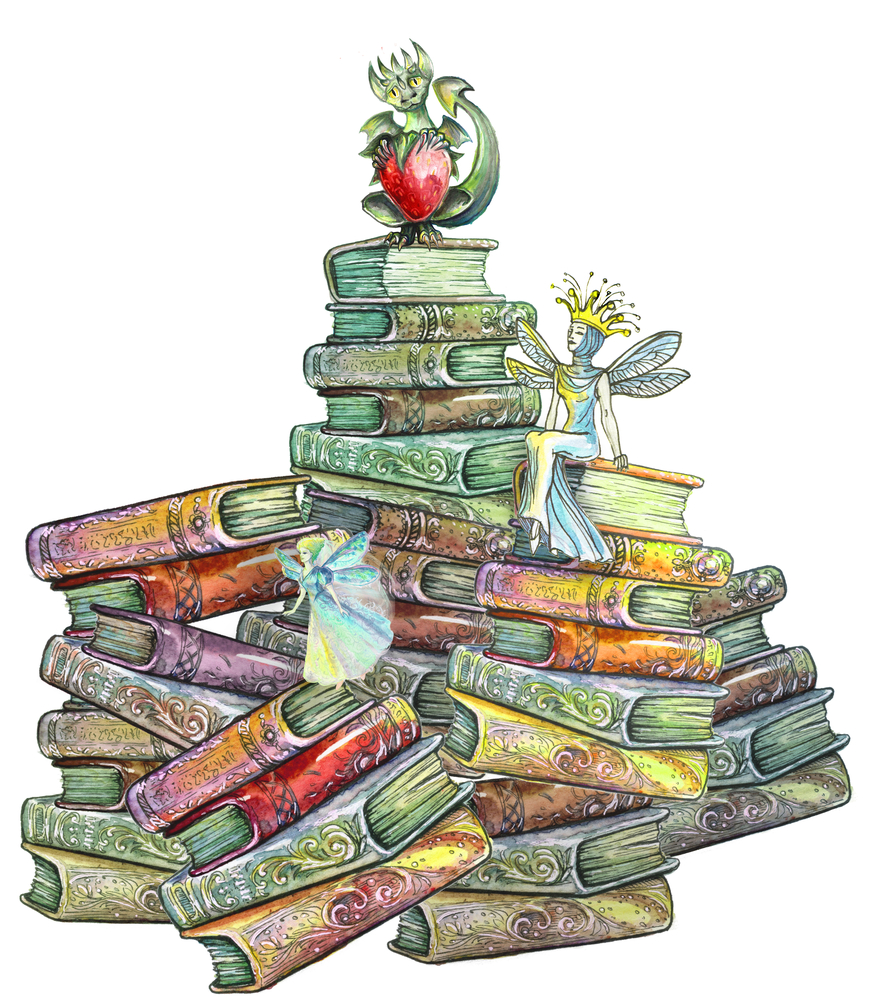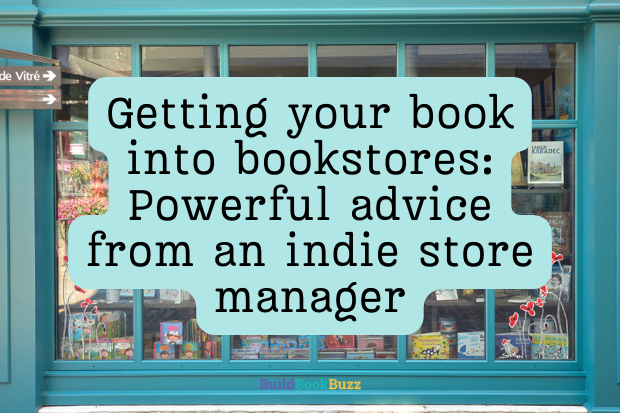Getting your book into bookstores: Powerful advice from an indie store manager
Award-winning indie bookstore manager Nicole Brinkley shares everything you need to know about getting your book into bookstores.
I knew that my friend Lisa Iannucci’s daughter, Nicole Brinkley, managed an independent bookstore in downstate New York, but didn’t know Nicole was a retail rockstar until I read about her in Publishers Weekly earlier this year.
That’s when I discovered that the American Booksellers Association selected Nicole to moderate a panel on “Recapturing the Tween Middle Grade Market” at its Winter Institute 2024 in Cincinnati.
I knew immediately that she’d be a fantastic source for a Q&A about getting your book into bookstores.
I was soooooo right.
Meet Nicole Brinkley, indie bookstore manager
Nicole Brinkley is the manager of Oblong Books in Rhinebeck, N.Y., where she has been known to cause a cloud of malaise to form around anyone who claims that genre fiction is a lesser form of literature.
Described by one media outlet as “one of the best and most outspoken leaders in the indie bookstore community,” Nicole has won multiple awards for her work as a “legendary bookseller.”
She also reviews books professionally for BookPage and Shelf Awareness. Media outlets that includeThe Wall Street Journal, Parade, Publishers Weekly, Bustle, and others have featured her work, which has ranged from interviews to book recommendations to essays and articles.
Nicole has also taught educational sessions for the Society of Children’s Books Writers and Illustrators (SCBWI) and the American Booksellers Association, hosted events for companies such as HarperCollins and Boston.com, and spoken at numerous conferences and conventions.
Find her online at nebrinkley.com.
Getting your book into bookstores
I’m thrilled by Nicole’s generosity. Refill your mug and settle in to learn everything you need to know about getting your book into bookstores.
So many self-published authors dream of getting their books into bookstores, and for good reason. How easy or hard is it for them to do so?
It is difficult for any book to make its way into a bookstore.
Self-published authors do have a different climb to getting into stores because of some logistical elements that we’ll talk about later on, but consider the number of books published each year. Somewhere between 500,000 and one million books are traditionally published each year between the Big 5 publishers and small presses, and upwards of one million books are self-published every year.
My bookstore fits 30,000 books total–not just new books!–and is considered a large independent bookstore. That means an incredibly small portion of what is published makes its way into our store.
When considering whether to stock a self-published book, what does your bookstore look for? What do you need to see/know before you feel comfortable placing an order?
Self-published books stocked in our store need to meet many of the same requirements that traditionally published books do.
The big four requirements to meet are:
1. Book prices are reasonable for their category and genre.
For example, adult paperback fiction is usually around $18 to $20.
So, self-published paperback fiction that costs $40 likely won’t be a good fit for our store.
2. Books are offered at a good discount to the store.
Most traditional publishers offer books at a 46% to 50% discount.
This allows bookstores to earn half of the cover price, which they use to pay staff and keep the store going. It is harder to justify the shelf space to books with shorter discounts since the store will make less money on them.
3. Books are returnable.
What happens if we can’t sell a book?
Because of the low profit margins of books and the way the industry works, we need to send books back to publishers when they don’t sell within an expected timeframe. Otherwise, our shelves are cluttered with books nobody ended up wanting.
Books must be returnable both to traditional publishers and to self-published authors (or their distributors).
4. Books fit with the customers and store’s stock.
Did you self-publish a paperback picture book about dentists? It might not be the best fit for stores that don’t sell a lot of paperback picture books.
What about a beautifully packaged work of literary fiction? Maybe not the best fit for a genre-focused store.
We need to vet authors
Bookstores looking to stock self-published authors also have the extra hurdle of vetting the authors and their books’ content. This is normally something we offload to a traditional publisher or a publisher’s sales representative. We trust them to know who and what they’re publishing.
“Bookstores looking to stock self-published authors also have the extra hurdle of vetting the authors and their books’ content.”
~ Nicole brinkley
But with two million self-published books coming out every year, we need to take the extra step to verify who they are.
If they’re writing nonfiction, do they actually have the credentials to be writing about their topic or are they spreading misinformation?
If they’re writing fiction, have they generated something through artificial intelligence?
None of these vetting decisions are personal attacks on a self-published author. We know that many authors are just that: authors. Talented, hardworking, and worthy of having their books sold in the bookstore.
But with the huge volume of books published, it’s difficult to distinguish the excellent self-published work from the less-than-stellar stuff without help. Meeting the first four requirements makes that important vetting much easier!
Packaging matters
While not required for either traditionally published or self-published books, having a well-packaged book also helps.
I don’t just mean a pretty cover, though that is good.

Design and print your cover with the title and author name on the spine so the books don’t disappear when we put them on the shelf. Print an ISBN and a barcode on the back of the book–and make sure that they’re clear and scannable
Little details to just having a book as a functional product go a long way to helping it do well in stores.
Little details to just having a book as a functional product go a long way to helping it do well in stores. ~ Nicole BrinkleyClick to tweetIf you’re looking for a self-published author who does all of this very well, take a look at C.M. Nascosta.
Who makes the yes/no decision? What’s the best way to approach them about stocking a book?
Bookstores have buyers–booksellers whose entire job is selecting books that go into their store.
At Oblong Books, the co-owner does all book-buying. (We have separate buyers for toys and cards.) Other stores have separate buyers for kids books and adult books, or buyers for different genres and categories.
Bookstores that run consignment programs for self-published books might also have somebody who runs those programs separately from the buyer. Generally, however, the buyer is the way to go.
It is very easy to approach buyers about carrying a book.
It is very easy to approach buyers about carrying a book. ~ Nicole BrinkleyClick to tweetGo into or call a store, explain that you have a book coming out or a book recently published, and ask if you can have the buyer’s name and contact information.
Drop the buyer an email with the information on your book:
- Title
- Author
- Publication date
- Publisher (if you’re using a small press vs. fully self-publishing)
- Why it’s a good fit for the store
- How bookstores can order (either directly from the author or through programs like IngramSpark, as bookstores cannot and will not order through Amazon)
You do not need to repeatedly bring books or promotional material to the store. You do not need to call them.
Self-published authors get a bad rap because of individuals who come into stores and throw hissy fits when their books aren’t immediately accepted or when the buyer decides their book isn’t a good fit for the store.
“Self-published authors get a bad rap because of individuals who come into stores and throw hissy fits when their books aren’t immediately accepted or when the buyer decides their book isn’t a good fit for the store.”
nicole brinkley
If you’re polite and understand that this is a business, store employees will treat you well in turn. That’s the start of a good relationship with a bookstore. Even if they don’t take your book now, they might always be somebody you can work with down the line.
Speaking of placing an order, what are your store’s financial terms with books provided by the author?
We work with self-published authors in a variety of ways.
Our store orders self-published books through IngramSpark and from authors directly that do well for us. Many of these are local authors or authors whose books have strong ties to the region. We want to support them, and appreciate that they want to support us.
In these cases, we pay directly to either the distributor (like IngramSpark) or the author (if they’re supplying the book).
We also have a consignment program for books that we aren’t 100% sure are a good fit or for books that aren’t normally returnable.
Our consignment program ensures that those books get the attention they deserve while also covering our bases. We can make money when they sell, and return books when they don’t…all while giving authors a chance to get their books in front of our customers.
There is a flat fee to enroll in the consignment program, but it guarantees display space for an entire month. We cut checks for the author periodically throughout the year as books sell.
What are your three best tips for getting your book into bookstores?
Only three?! Well, I’ll try my best.
1. Be strategic about the bookstores you reach out to.
If you’re a romance author, look at romance-only bookstores or bookstores known for working with indie romance authors. If you’re writing about a specific region, reach out to bookstores in that region.
Talk to your local indie. You don’t need to be in every bookstore, but know why a bookstore would be a good fit for you.
2. Be kind. Be patient. Be polite.
Most booksellers will be polite and professional when working with you. You can still convert those that aren’t into allies down the line.
(Trust me, my friends: I know that some booksellers can be short with self-published authors who are trying their best, and it’s not fair to you. Understand that there are people who have come before you and given authors in your situation a bad name, and that you don’t need to continue that chain. You can be better than them.)
Self-publishing is a job. Just be professional.
3. Please put your title on the spine of your book.
Please.
It makes the lives of the booksellers so much easier once the book is in the store.
What else should we know about getting your book into bookstores?
One of my ongoing goals is to read more small press and self-published authors, and I know many young booksellers who have the same goal.
I can’t wait to see more independent authors make their way into the independent bookstore space. We’re natural allies!
Write a book that people want to buy
I’m so grateful to Nicole for sharing her wisdom and experience with us so you know all about getting your book into bookstores!
I’ll add just one more thought: Stores want books that people want to buy.
People won’t want to buy your book if they don’t know about it, so work hard to help them discover it. Create demand so that booksellers like Nicole are ready, willing, and able to stock your book.
Write a great book, pursue reviews so you have that third-party validation that people like it, and continue to market it long after the launch. Both will make it easier for bookstores to say “Yes!” when you contact them about carrying your book.
Want to make it easier for fans to write short, meaningful reviews? Use the Build Book Buzz Reader Book Review Form. It’s your shortcut to success.
Do you have a question for Nicole about getting your book into bookstores? Please leave it in a comment.
Like what you’re reading? Get it delivered to your inbox every week by subscribing to the free Build Book Buzz newsletter. You’ll also get my free “Top 5 Free Book Promotion Resources” cheat sheet immediately!



Thanks….just want I need in my publishing journey for a 17 July release!
Don’t you love when that happens, Cat? I’m sure your book will be a hit!
Sandy
Oh dear, I can just imagine that “hissy fit” scenario, and it’s a cautionary tale! Thanks for that first reminder, too: “It is difficult for *any* book to make its way into a bookstore.”
Absolutely! Even traditionally published books (especially those on niche topics, like my now-out-of-print Publicity for Nonprofits) aren’t guaranteed bookstore distribution.
Sandy
Thank you for sharing this interesting, informative article. It’s true that sometimes the greatest challenge in getting a bookstore owner to consider stocking your self-published book is the behavior (and the quality of the writing) of other self-published authors.
I agree that “quality” is a very big piece of this, Mark.
Sandy
Thank you for sharing this, Sandra. I especially enjoyed learning about asking for books to be put on consignment in a store. Even if there is a small fee, it might be better to consider that option than having the book returned, which is costly to the author and extra work for the bookseller.
Congratulations to Nicole Brinkley for running a successful indie bookstore.
That makes sense, Rosie. I think that for some, the desire to say their book is in stores overrides the financial implications — they’ll take a loss in exchange for bragging rights. For others, though, the goal is to reach more readers cost-effectively.
Sandy
Great information! Thank you so much. I’m storing it away for when I finish my book.
It’s definitely a keeper, Lisa, thanks to Nicole! Thanks for stopping by!
Sandy